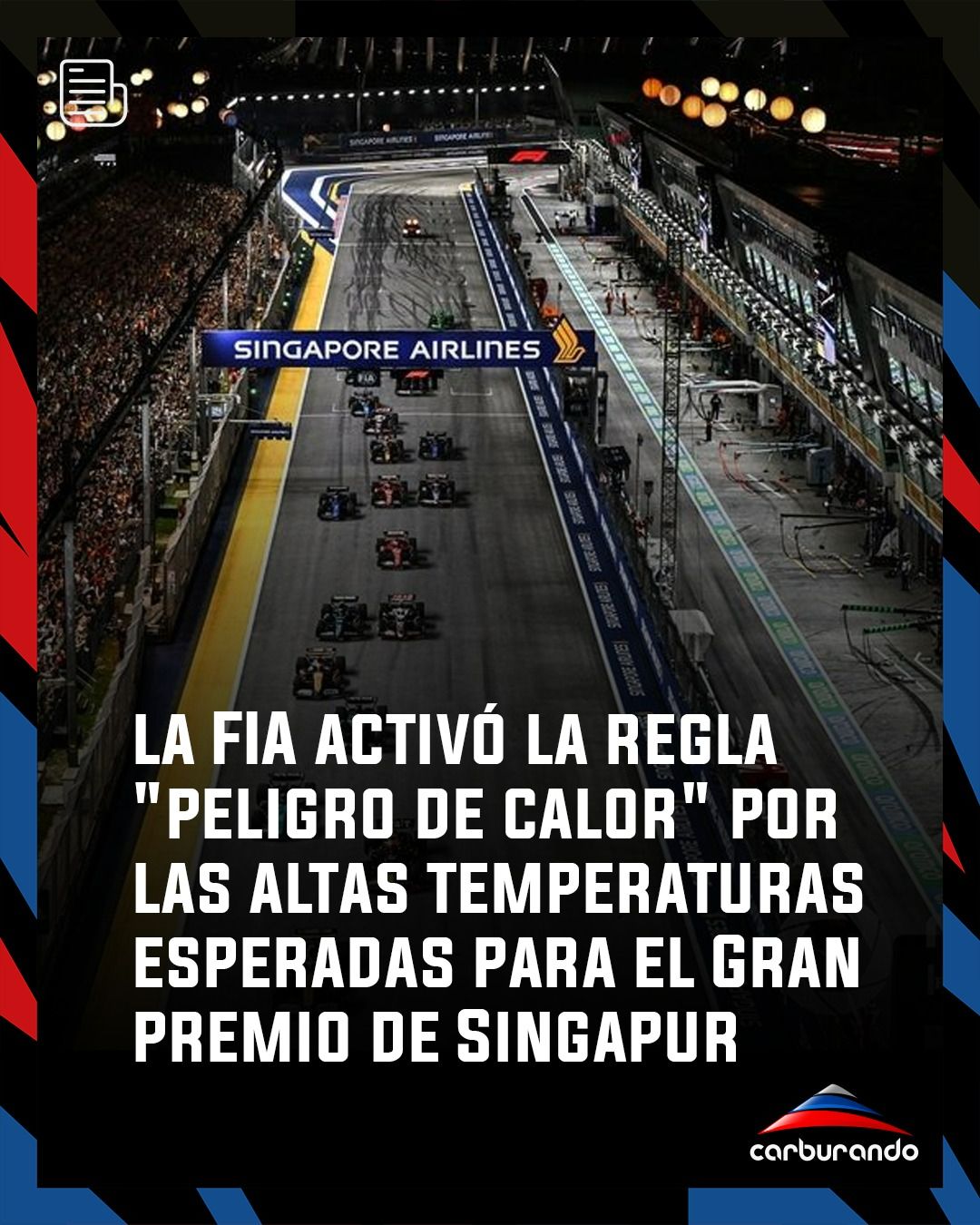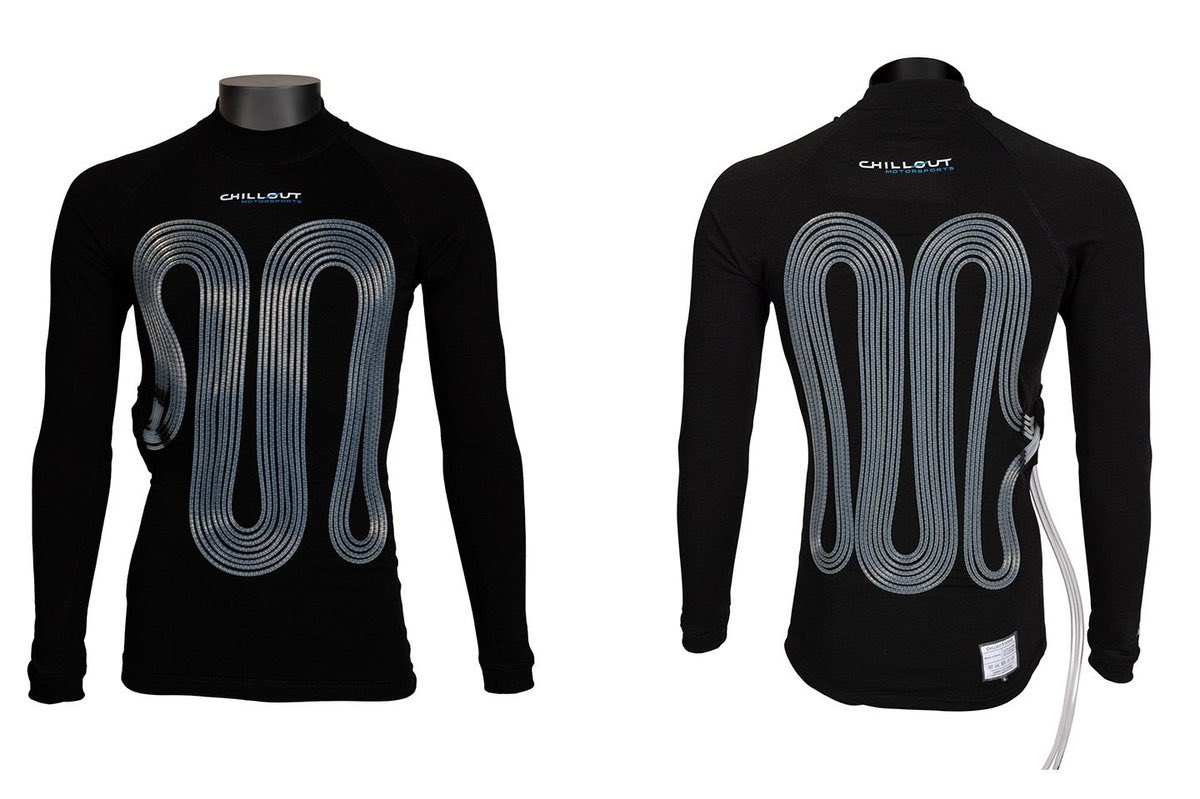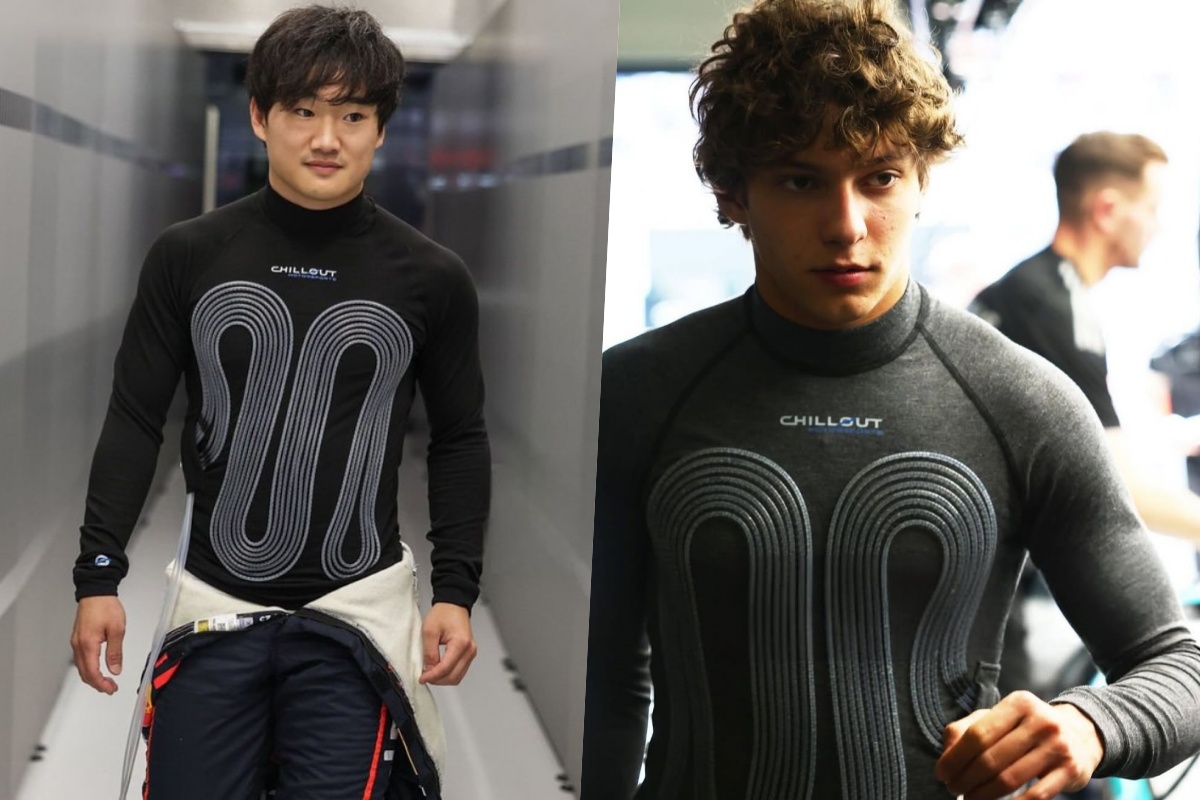Calor extremo (SPA-ENG)
hive-189157·@hosgug·
0.000 HBDCalor extremo (SPA-ENG)
<center>  </center> <div class=text-justify> [Source](https://x.com/CarburandoTV/status/1973723023787368724/photo/1) La última novedad respecto al Gran Premio de Singapur que se correrá este próximo domingo en el habitual circuito callejero de Marina Bay no tiene que ver con las escuderías, tampoco con la preparación o inconvenientes de los vehículos y pilotos; se trata del clima. Se ha declarado "riesgo por calor" para todo el fin de semana y se esperan temperaturas máximas que superen los 31° centígrados y una humedad cercana al 80%, por suerte se corre de noche, caso contrario sería una situación sin precedentes. Esa remanida situación de calor extremo que es común al léxico de cualquier meteorólogo no lo es para la FIA y esta carrera, debido a tal condición climática pronosticada, ha disparado las alarmas atendiendo al antecedente del año anterior cuando varios de los pilotos intervinientes en aquella carrera debieron ser atendidos a su finalización por problemas relacionados con la deshidratación y el calor soportado durante la hora y 40 minutos que la competencia demandó. Otro antecedente cercano sobre cómo la temperatura y la humedad obran sobre los pilotos lo encontramos en el Gran Premio de Qatar de 2023; Logan Sargeant debió abandonar la carrera agotado por el excesivo calor; en esa misma competencia, Esteban Ocon tuvo varios accesos de vómito. Y esos no son los inconvenientes más graves; el calor agobiante puede provocar mareos y pérdida de concentración que podría derivar en un accidente de efectos desconocidos. <center>  </center> <div class=text-justify> [Source](https://x.com/TelemetricoF1/status/1973705204198461469/photo/1) La consecuencia directa de esta declaración de riesgo por calor es que se ha autorizado a las escuderías a utilizar por primera vez en la historia chalecos refrigerantes durante la competencia, un dispositivo probado a principios de temporada y reservado para ser utilizado en casos como el que se pronostica este domingo. Leí en algún medio periodístico especializado que no es obligatorio su utilización, pero, debido a que agrega peso al vehículo, aquellos equipos que decidan no utilizarlo deberán lastrar sus monoplazas para compensar la diferencia. Al enterarse de la medida, Nico Hülkenberg mencionó: "Todos debemos instalar el lastre. Entonces, ya que lo llevas, lo mejor es usar el chaleco". Práctico y contundente el experimentado piloto de Quick Sauber. Si bien la mayoría de los equipos ha experimentado con estos chalecos, aún quedan por resolver varios inconvenientes y dificultades técnicas y prácticas, por eso el uso es optativo. Este aditamento sí será obligatorio a partir de la temporada 2026. <center>  </center> <div class=text-justify> [Source](https://x.com/diegodurruty/status/1973807774086656007/photo/1) A partir de mañana comenzaremos a tener las primeras sensaciones sobre estos refrigeradores personales, ¿se sentirán cómodos los pilotos? ¿O preferirán soportar el calor y el lastre y no los chalecos? Nos enteraremos en pocas horas. </div> <br></br> <center> ___________________________________________________________ </center> <br></br> <div class=text-justify> #### Extreme heat The latest development regarding the Singapore Grand Prix, which will be run this coming Sunday on the familiar Marina Bay street circuit, has nothing to do with the teams, nor with the preparation or problems with the cars and drivers; it's about the weather. A "heat risk" has been declared for the entire weekend, and maximum temperatures exceeding 31°C and humidity close to 80% are expected. Fortunately, the race is taking place at night; otherwise, it would be an unprecedented situation. That well-worn situation of extreme heat, which is common to any meteorologist's vocabulary, is not for the FIA, and this race, due to such predicted weather conditions, has set off alarm bells. This is due to the precedent set last year, when several drivers participating in that race required treatment after the race ended due to problems related to dehydration and the heat they endured during the 1 hour and 40 minutes the race lasted. Another recent example of how temperature and humidity affect drivers can be found in the 2023 Qatar Grand Prix. Logan Sargeant was forced to retire from the race, exhausted due to the excessive heat; in that same race, Esteban Ocon suffered several bouts of vomiting. And those aren't the most serious issues; the sweltering heat can cause dizziness and loss of concentration, which could lead to an accident with unknown consequences. The direct consequence of this heat risk declaration is that teams have been authorized to use cooling vests during the competition for the first time in history, a device tested at the beginning of the season and reserved for use in cases like the one predicted this Sunday. I read in some specialized media that its use is not mandatory, but because it adds weight to the vehicle, those teams that decide not to use it must ballast their cars to compensate for the difference. Upon learning of the measure, Nico Hülkenberg said, "We all have to install ballast. So, since you're wearing it, it's best to use the vest." The experienced Quick Sauber driver was practical and emphatic. While most teams have experimented with these vests, several technical and practical issues and difficulties remain to be resolved, which is why their use is optional. This device will be mandatory starting in the 2026 season. Starting tomorrow, we'll begin to get our first impressions of these personal coolers. Will the drivers feel comfortable? Or will they prefer to endure the heat and the ballast instead of the vests? We'll find out in a few hours. </div> <br></br> <center> _____________________________________________________ </center> <br></br> <div class=text-justify> Héctor Gugliermo @hosgug </div>
👍 joeyarnoldvn, aaalviarez, jhelbich, muntaharaceh, sports.alfa, pepitagold, agustinaka, kurkumita, pablo1601, hosgug-buzz, ezgedo, lidecker, vgalue, gallatin, hive.argentina, jdgu, noeliazul, pablo1601.sports, meliq, onlyfly, spendhbdarg, ordosjc, sports.power.bot, vatman, maggie22, gabyjc, joseda94, josevillanueva, abrahan414, evelynchavez, fullcolorpy, xgerard, ppics, pdc, hgalue, juangar, arrests, xelenium, wgonz, egonz, gracerolon, pastorencina, ysmael20, mati14, m00m, merlyned, comandoyeya, cyclope, son-of-satire, exchangethis, theplan, marnaza, delicarola, aleor, danieldrawing, jhonny34, newmanjosue, veronicabracho, gladiannys, yris, jonatansanders, bsas, racibo, fulldeportes, meno, gaborockstar, yusmi, alexaivytorres, joseantpp, soniabalzan, tuerca, iticocaracas, hive-189157, badge-153040, fulldeportes6, fulldeportes1, jennyarte, aventurerasbike, mocha15, victoraraguayan1, luiselg1009, drawinglife, stow01, luisfxer, karlex77, gchacin25, viviana.fitness, alto96, knightly, knot, coolmole, jmis101, aletoalonewolf, hiveecuador, menoshops, cguitars, snapie, betoman, fulldeportes2, fulldeportes3, enviarg, youdontsay, siriromo, fermionico, genyus, zupole, steemrant, s22, tratos, slitherin, qubes, goldbuyer, sponge-bob, hivepago, hebrew, upsetfix, frieder, changes, alfty, surron, greenthings, smartvote, balcarce, asado, bolonqui, s18, jim888, losmoros, pacobeta365, htooms, rumors, boom-bap, heberwords, rebound, palabras1, paty2005, zutodoterreno, geronimo06, editorojo, sadiel0102, lolz.pool, hive103505.fun, eliezerdiaz21, epirela22, lolz.lolz, pof.lolz, hivesucre, lvj, btu, bcc, pdq, hijosdelhombre, ezrider, rx7, done, waybored, prm4031, tonyes,